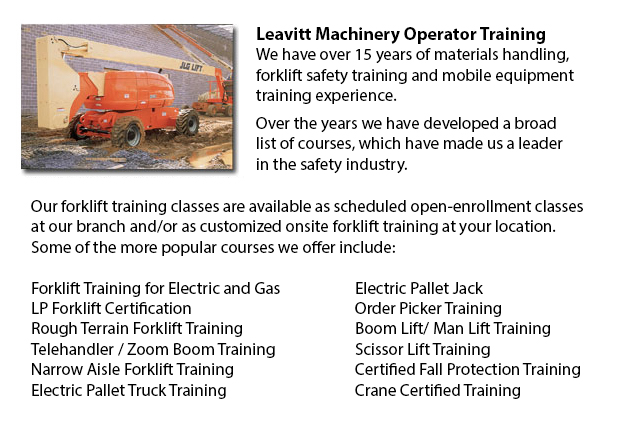
Aerial Platform Training Scottsdale - Aerial lifts can be used to accomplish numerous different duties done in hard to reach aerial spaces. Many of the duties associated with this type of lift include performing daily maintenance on structures with lofty ceilings, repairing telephone and utility cables, lifting heavy shelving units, and trimming tree branches. A ladder could also be used for many of the aforementioned tasks, although aerial lifts provide more security and stability when correctly used.
There are a handful of different designs of aerial lifts available, each being able to perform slightly different tasks. Painters will sometimes use a scissor lift platform, which is able to be utilized to reach the 2nd story of buildings. The scissor aerial jacks use criss-cross braces to stretch out and extend upwards. There is a table attached to the top of the braces that rises simultaneously as the criss-cross braces lift.
Bucket trucks and cherry pickers are another kind of aerial lift. They contain a bucket platform on top of a long arm. As this arm unfolds, the attached platform rises. Forklifts utilize a pronged arm that rises upwards as the lever is moved. Boom lifts have a hydraulic arm that extends outward and hoists the platform. Every one of these aerial platform lifts have need of special training to operate.
Through the Occupational Safety & Health Association, also labeled OSHA, education programs are on hand to help make sure the employees satisfy occupational values for safety, machine operation, inspection and maintenance and machine load capacities. Workforce receive qualifications upon completion of the lessons and only OSHA certified employees should operate aerial lift trucks. The Occupational Safety & Health Organization has established rules to uphold safety and prevent injury when utilizing aerial lifts. Common sense rules such as not utilizing this apparatus to give rides and ensuring all tires on aerial hoists are braced in order to hinder machine tipping are noted within the guidelines.
Regrettably, statistics illustrate that more than 20 operators die each year while working with aerial lift trucks and 8% of those are commercial painters. Most of these accidents are due to inappropriate tire bracing and the lift falling over; therefore a lot of of these deaths had been preventable. Operators should make sure that all wheels are locked and braces as a critical security precaution to prevent the device from toppling over.
Other suggestions involve marking the surrounding area of the device in a visible way to protect passers-by and to guarantee they do not approach too close to the operating machine. It is vital to ensure that there are also 10 feet of clearance between any electrical cables and the aerial hoist. Operators of this equipment are also highly recommended to always wear the appropriate safety harness when up in the air.
-
Crane Certification Scottsdale
Crane Certification Scottsdale - The Crane Certification Program consists of the industry suggested subject matter that would teach the efficient and safe operation of cranes. The person would train in the following: pre-operational, operational and... More -
Heavy Equipment Operator Training Scottsdale
Heavy Equipment Operator Training Scottsdale - Heavy equipment operator training facilities that provide good standards within the business, offering field performance tasks and additional equipment training are really sought after training features.... More -
Heavy Equipment Training School Scottsdale
Heavy Equipment Training School Scottsdale - HEO or the heavy equipment operator courses would provide you with the skills and knowledge required so as to enter the workforce as an entry level heavy equipment operator. In this twelve week course plus... More -
Crane Operator Classes Scottsdale
Crane Operator Classes Scottsdale - For the operators and the supervisors, current and new, the crane operator training course is suitable for all. Course content deals with applicable federal, provincial and state safety regulations. The training's... More -
Forklift Operator Certification Scottsdale
Forklift Operator Certification Scottsdale - Certification for forklifts are required to guarantee the safe operation of forklifts for those employers in warehouse, construction and industrial environments. The training needs to involve a method of e... More -
Crane Training Schools Scottsdale
Crane Training Schools Scottsdale - Our different programs for Mobile Crane Operation are meant for skilled operators who needs certification or re-certification, and for inexperienced people who are searching for their very first job as an operator... More -
Aerial Boom Lift Training Scottsdale
Aerial Boom Lift Training Scottsdale - Aerial Boom Lift Training is necessary for any individual who supervises, operates or works near boom lifts. This particular type of aerial lift or aerial work platform is utilized for lifting individuals, mater... More -
Telehandler Training Scottsdale
Telehandler Training Scottsdale - Telescopic handlers often known as telehandlers for short, are an extremely popular piece of heavy construction equipment. They are widely used in the construction and agricultural industries. These equipments have f... More

Forklift Training Scottsdale
TOLL FREE: 1-888-254-6157
Scottsdale, Arizona
forkliftcertificationscottsdale.com
Email Us
About Us


